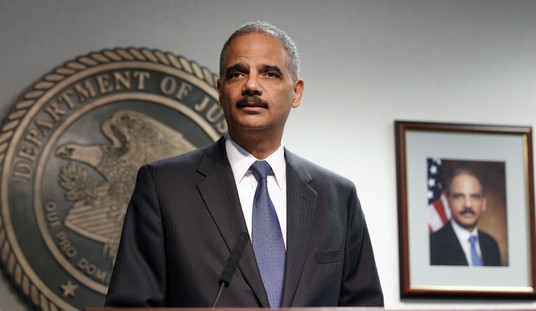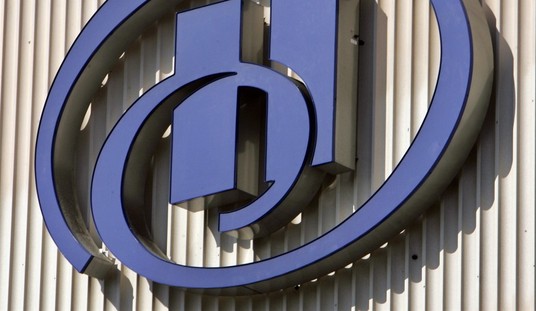Joy Reid recently got a promotion at MSNBC where she’ll soon have a nightly show instead of the weekend show she has had for the past couple of years. It looks like it’s going to be a rocky start to her new job. A libel case filed against her by a woman named Roslyn La Liberte was just revived by the 2nd Circuit Court of Appeals. The whole case revolves around this photo.

That’s Roslyn La Liberte in the MAGA hat. The photo was taken at a city council meeting in Simi Valley, California on June 25, 2018. The topic of discussion that night was Senate Bill 54 which would limit the ability of local law enforcement to cooperate with ICE. The photo was posted on Twitter along with the caption: “‘You are going to be the first deported’ [and] ‘dirty Mexican’ [w]ere some of the things they yelled they yelled [sic] at this 14 year old boy. He was defending immigrants at a rally and was shouted down. Spread this far and wide this woman needs to be put on blast.”
Joy Reid retweeted it on June 29, the day after it was posted. And if she had stopped there, that might have been the end of the story. But later the same day she posted the photo on her Instagram account and changed the caption:
He showed up to a rally to defend immigrants . . . . She showed up too, in her MAGA hat, and screamed, “You are going to be the first deported” . . . “dirty Mexican!” He is 14 years old. She is an adult. Make the picture black and white and it could be the 1950s and the desegregation of a school. Hate is real, y’all. It hasn’t even really gone away.
The difference is subtle, but whereas the original caption said “they” yelled at the Mexican 14-year-old, Reid’s caption clearly says “she” (meaning La Liberte) had made those comments. The problem is that according to both La Liberte and the 14-year-old pictured in the photo, she didn’t say those things. In fact, in an interview, the 14-year-old said La Liberte had tried to keep things “civil.” Fox 11 in Los Angeles interviewed them both after the photo blew up online.
By the way, kudos to the 14-year-old who is sticking up for freedom of speech rather than proclaiming himself a victim in this situation.
But getting back to Joy Reid, a couple of days after Joy Reid published the photo on Instagram, she published it again on Instagram and Facebook, this time it was juxtaposed next to a black and white image of school desegregation (Little Rock, Arkansas, 1957) with the following caption:
It was inevitable that this [juxtaposition] would be made. It’s also easy to look at old black and white photos and think: I can’t believe that person screaming at a child, with their face twisted in rage, is real. By [sic] every one of them were. History sometimes repeats. And it is full of rage. Hat tip to @joseiswriting. #regram #history #chooselove
Roslyn La Liberte hired a lawyer and pointed out that what Reid was saying about her wasn’t true. Initially, that libel suit went after Reid not only for her own posts on Facebook and Instagram but for her initial retweet on Twitter. The court found that Reid was covered by section 230 of the Communications Decency Act for the retweet because those weren’t her words. As to her own posts on Instagram and Facebook, the court dismissed those claims as well by finding that La Liberte was a “limited public figure” meaning Reid’s posts had to rise to the level of “actual malice” to be actionable.
In today’s decision, the 2nd Circuit agreed with the lower court on the initial retweet and section 230, but disagreed with the characterization of La Liberte as a limited public figure. On the contrary, the 2nd Circuit decision says La Liberte does not have the “regular and continuing access to the media” that makes it possible for her to easily rebut claims made by someone like Joy Reid. Therefore, as a private figure, La Liberte only has to show that Reid was negligent. [emphasis added]
No one argues that La Liberte is an all-purpose public figure; the question is whether she became a limited purpose public figure with respect to California’s sanctuary-state law (SB 54), that is, did she “thrust [herself] to the forefront” of the controversy, “invite attention and comment[,] . . . [and] assume special prominence in [its] resolution.” Khawar v. Globe Int’l, Inc., 19 Cal. 4th 254, 263 (Cal. 1998) (internal quotation marks omitted) (quoting Gertz v. Robert Welch, Inc., 418 U.S. 323, 345, 351 (1974)). The district court answered affirmatively because La Liberte “attended and spoke about SB 54 at multiple city council meetings” and “appeared in a photograph in the Washington Post about the SB 54 controversy” one month before the Simi Valley Council Meeting.
That is not nearly enough. Thin as the findings are to begin with, the district court did not take into account the requirement that a limited purpose public figure maintain “regular and continuing access to the media.” Hutchinson v. Proxmire, 443 U.S. 111, 136 (1979). One reason for imposing the actual malice burden on public figures and limited purpose public figures is that “[t]hey have media access enabling them to effectively defend their reputations in the public arena.” Khawar, 19 Cal. 4th at 265 (citing Gertz, 418 U.S. at 344-45)…
La Liberte plainly lacked such media access. The earlier photograph, which showed her conversing, was in a Washington Post photo spread of attendees at an SB 54 protest. The article did not name La Liberte, let alone mention her views. The single caption described everyone depicted as “[s]upporters and opponents of [SB 54] rally[ing] and debat[ing] outside Los Alamitos City Hall.” (App. at 140-41.) Such incidental and anonymous treatment hardly bespeaks “regular and continuing access to the media.”…
True, La Liberte received media attention. Reid emphasizes that La Liberte appeared for a television interview after Vargas published his tweet but before Reid’s posts were published. However, media access that becomes available only “after and in response to” damaging publicity does not make someone a public figure. Khawar, 19 Cal. 4th at 266. By the time of the interview, the Photograph had gone viral, along with accusations that La Liberte had screamed vile racist remarks at a child. The interview was “only the media access that would likely be available to any private individual who found himself the subject of sensational and defamatory accusations.” Id. “If such access were sufficient . . . , any member of the media . . . could confer public figure status simply by publishing sensational defamatory accusations against any private individual.”…
Since La Liberte was not a limited purpose public figure, the district court erred by requiring her to allege actual malice, and her claim as to the June 29 Post
should not have been dismissed for failing to do so. On remand, the district court may assess whether La Liberte adequately alleged that Reid acted negligently with respect to that post, the standard for private-figure plaintiffs. See Khawar, 19 Cal. 4th at 274; Brown v. Kelly Broadcasting Co., 48 Cal. 3d 711, 742 (Cal. 1989) (“[A] private person need prove only negligence (rather than malice) to recover for defamation.”).
In short, La Liberte is not a limited public figure. Most people only know she exists because she was smeared by a group of leftists online including Joy Reid.
There’s a footnote on the final page of the decision which is interesting: “The court reasoned that ‘it is plausible that [Reid] learned about the falsity of the content of the July 1 Post before publication,’ including by way of emails from La Liberte’s son.” In other words, La Liberte’s son apparently wrote to Reid alerting her to evidence (the video above?) that her interpretation of the photo was wrong before she published the final post on Facebook and Instagram. If so, that’s worse than negligence on her part.








Join the conversation as a VIP Member